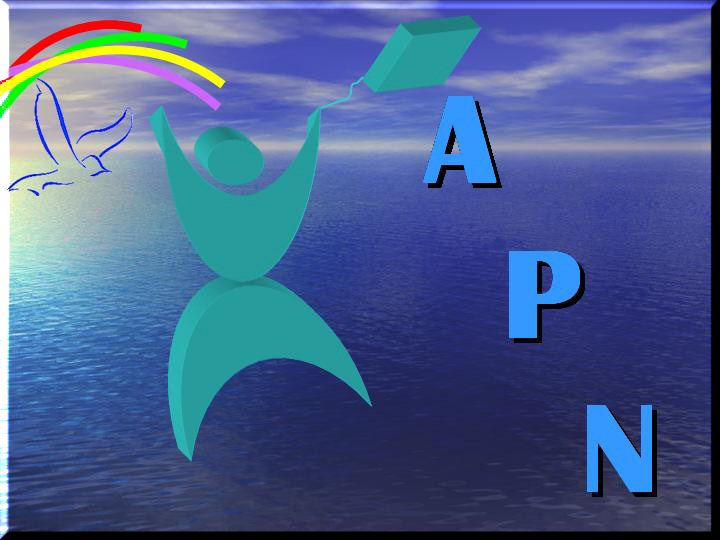
Congenital Miopathies and Anesthesia
Sunita Goel
Lecturer Aneshtesiologist, Bj Wadia Children's Hosiptal, Parel, Mumbai, India
Vol. 3, N. 4, Settembre 2005
MYOPATHIES: Myopathies are primary diseases of striated muscles in which biochemical, morphological or neurophysiological changes occur singly or in combination. They are characterized by the description of the histologic lesion and the clinical and genetic picture. Congenital myopathies are mainly of 3 types:
- Central core disease
- Nemaline myopathy
- Centronuclear Myopathy
Central core disease: It is a rare disorder. It is so named because of the metabolically inactive cores present in the muscle fibres. Patients have decreased fetal movements and breech presentation. They have hypotonia and delay in motor milestones with increased proximal weakness. In childhood, they have difficulty in climbing stairs and getting up from the floor. Legs are more affected than arms. Investigations reveal increased CPK levels. EMG shows myopathic pattern and muscle biopsy shows fibres with single or multiple central or eccentric discrete zones devoid of oxidative enzymes.
Respiratory system.
There is distinctive presence of rods or thread like structures in the muscle fibres. A severe neonatal form presents with hypotonia and feeding difficulties leading to early death. Older children present with delayed motor milestones. The physical appearance is striking. Patients have long narrow facies, high arched palate, open mouthed appearance due to prognathous jaw, skeletal abnormalities and facial and generalised muscle weakness. Investigations reveal increase in CPK levels. EMG shows myopathic pattern with occasional fibrillation potentials. Muscle biopsy shows cluster of small rods. The muscle often shows Type 1 fibre predominance.
It is of 3 types:
1) Neonatal form: Presents with severe hypotonia and weakness at birth. Respiratory assistance may be required.
2) Late infancy - Early childhood: Presents with delayed milestones, marfanoid features (slender body habitus, long narrow face, high arched palate), scoliosis, club feet, progressive Ophthalmoplegia (may have ptosis) and varying degrees of extraocular muscle impairment.
3) Late childhood - Adult type: Present in the 2nd or 3rd decade with full extraocular muscle involvement (rarely ptosis). Scoliosis and clubfeet may be present.
*All myopathies may have varying degrees of cardiac involvement. Central core disease is especially prone to cardiomyopathies.
MUSCULAR DYSTROPHIES: It is a group of disorders of primary muscular atrophy of unknown cause. They are best characterised by the lack of any evidence of denervation and yet there is degeneration of the muscle fibres and increases in the content of fat and fibrous tissue in the muscle. They are commonly seen and have features similar to myopathies. The common one are discussed below:
Duchenne Muscular Dystrophy: It is an X-linked disorder also called pseudohypertrophic muscular dystrophy as the calf muscles appear large and bulky though they are weak. It presents at birth but becomes apparent at 3-5 years of age. Patients present with ‘Gowers manoeuvre' i.e. uses his hands to climb up himself. Contractures are common and fixed. Scoliosis develops over a period of time. Muscle weakness is progressive. Cardiac cause of death is uncommon but presents with cardiomyopathy and CCF may occur. Intellectual impairment is common. Investigations show CPK levels increased by 20-100 times of normal. EMG features are similar to those of myopathy. Muscle Biopsy shows groups of necrotic and regenerating fires.
Becker's Muscular Dystrophy: It is also an X-linked muscular disease. Patients present with proximal muscle weakness. They present between 5-15yrs of age. Mental retardation is more common. Average life span is upto 4th-5th decade.
TYPES OF SURGERIES REQUIRED IN THESE PATIENTS: These patients usually come for
- Muscle biopsies for diagnosis
- Contracture releases
- Club foot repair
- Neuromuscular scoliosis
ANAESTHESIA RELATED PROBLEMS: The various problems faced by us are:
-
Proneness to Malignant Hyperthermia
-
Cardiovascular problems ranging from arrhythmias to heart block
-
Respiratory failure
-
Problems due to other congenital abnormalities
Choice Of Anaesthesia: Regional or General
MALIGNANT HYPERTHERMIA: Malignant hyperthermia is a syndrome of a chain reaction of signs, which include a greatly increased body metabolism, muscle rigidity and high fever. Death or brain damage may result from cardiac arrest, internal haemorrhage or failure of other body systems. As all these myopathies are prone to malignant hyperthermia, it is important to know which are its prime triggers. All volatile anaesthetics- Halothane, Isoflurane, enflurane, Desflurane and Sevoflurane are triggers for malignant hyperthermia, while nitrous oxide is NOT. Amongst muscle relaxants Succinylcholine is a potent trigger. Thus, for short surgeries it is safer to use total intravenous anaesthesia using
a) Propofol and fentanyl or
b) Ketamine with supplements of nitrous oxide
Regional anaesthesia is still the anaesthesia of choice in these cases unless there are its contraindications. Various nerve blocks can be given for pain relief such as Lateral Cutaneous, Common peroneal, Brachial plexus blocks and Lower limb blocks.
Treatment Of Acute Malignant Hyperthermia:
-
STOP all volatile anaesthetics and Succinylcholine.
-
Hyperventilate with 100% oxygen.
-
Give 2.5mg/kg of dantrolene sodium IV.
-
Treat acidosis with bicarbonate.
-
Monitor core temperature- if hyperthermic, cool by nasogastric, rectal lavage and surface cooling.
- Treat hyperkalemia with glucose-insulin, bicarbonate and calcium chloride. Avoid calcium channel blockers, most arrhythmias respond to correction of hyperkalemia and acidosis by hyperventilation, dantrolene and bicarbonate.
-
Continue dantrolene for atleast 24 hours after control of episode
-
Ensure adequate urine output by hydration and diuretics since myoglobinuria is common
-
Follow coagulation profile- DIC may occur
- If suddenly cardiac arrest occurs, HYPERKALEMIA should be considered as the prime cause. Treatment is with glucose - insulin, sodium bicarbonate, calcium chloride and hyperventilation.
- There should be a high index of suspicion for cardiac arrhythmias either brady or tachyarrhythmias which have to be treated accordingly. They can even have heart blocks which need treatment accordingly.
Acknowledgements
We thank Dr. Sunita Goel, Pediatric Oncall and Dr. Ira Shah for professional collaboration with our Journal.
Dario Galante, MD
Scientific Manager of "Anestesia Pediatrica e Neonatale"